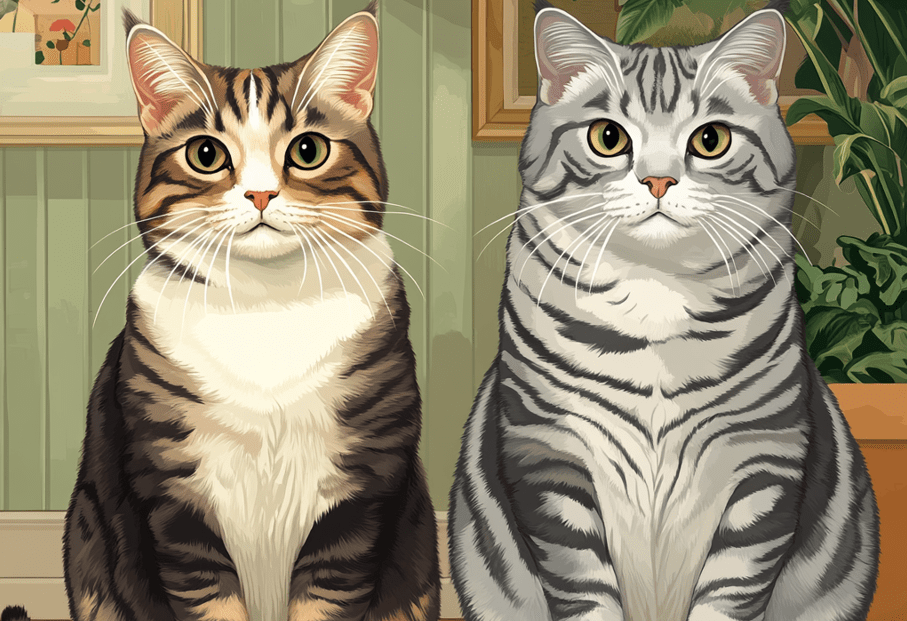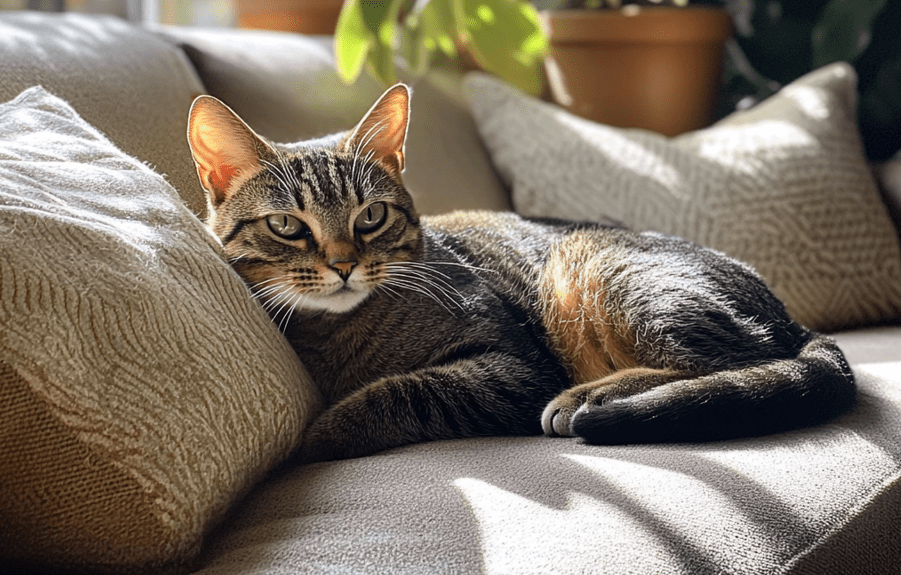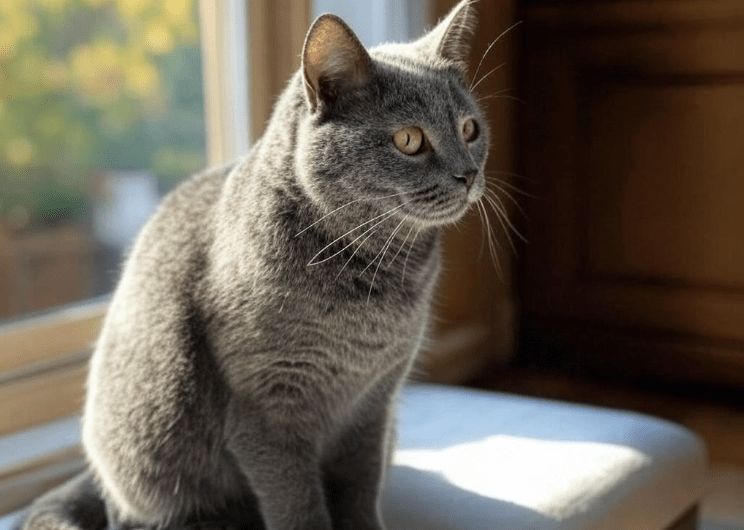
Vet trips can be a daunting experience for Domestic Shorthair cats and their owners. The unfamiliar environment, strange smells, and handling by veterinary staff can trigger anxiety in these sensitive felines. However, with the right preparation and techniques, you can make vet trips less stressful for your Domestic Shorthair, ensuring their health checkups are smoother and more comfortable. This comprehensive guide explores practical strategies, expert tips, and actionable steps to reduce stress during veterinary visits, helping your cat stay calm and healthy.
Why Vet Trips Are Stressful for Domestic Shorthairs
Domestic Shorthairs, known for their resilience and adaptability, can still find vet visits overwhelming. Several factors contribute to this stress:
Unfamiliar Environment: The veterinary clinic is filled with unfamiliar sights, sounds, and smells, such as disinfectants, other animals, and medical equipment.
Car Travel: Many cats dislike car rides, associating the motion and confinement with negative experiences.
Handling by Strangers: Being examined or restrained by unfamiliar people can be frightening.
Past Experiences: Negative memories from previous vet visits can make future trips more stressful.
Sensory Sensitivity: Cats have heightened senses, and the sensory overload at the vet can be intense.
Understanding these triggers is the first step toward making vet trips less stressful. By addressing each factor, you can create a more positive experience for your Domestic Shorthair.
Preparing Your Domestic Shorthair for a Vet Visit
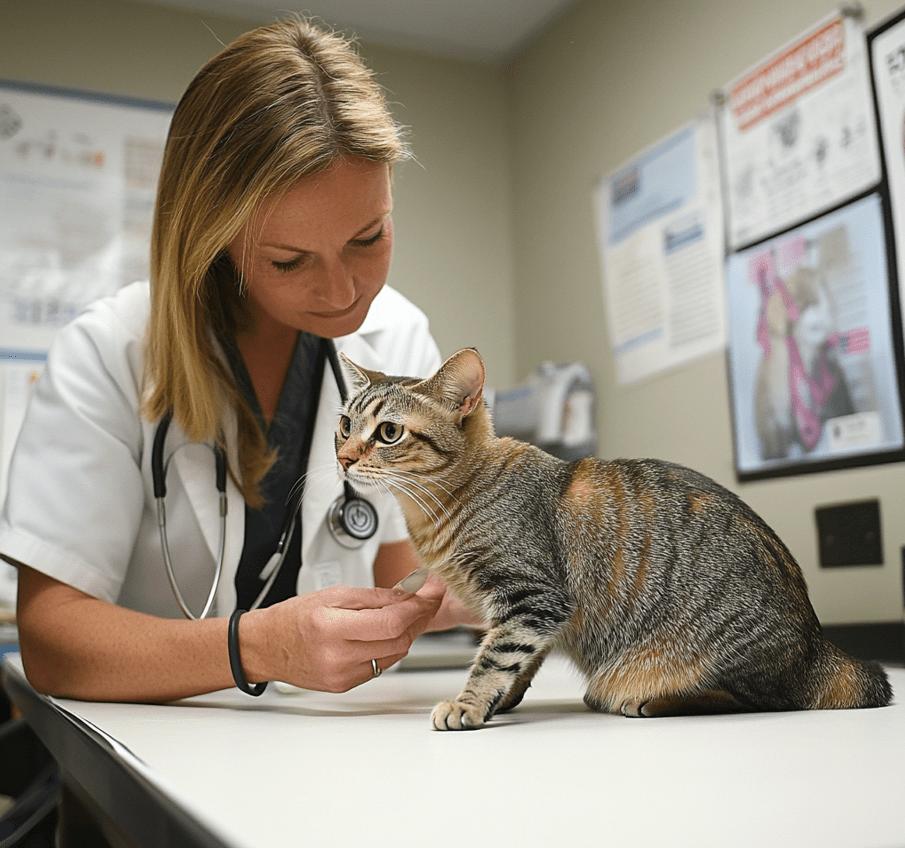
Preparation is key to reducing stress before, during, and after a vet visit. Here’s how to set the stage for a smoother experience:
1. Choose the Right Cat Carrier
A comfortable and secure cat carrier is essential for stress-free vet trips. Follow these tips to select and prepare the carrier:
Size and Design: Choose a carrier that’s large enough for your cat to stand, turn around, and lie down comfortably. Hard-sided carriers with a removable top are ideal, as they allow easy access during exams.
Familiarity: Leave the carrier out in your home for days or weeks before the visit. Place treats, toys, or a cozy blanket inside to make it a familiar and positive space.
Scent Comfort: Spray the carrier with a feline pheromone product, like Feliway, to create a calming effect. Alternatively, place an item with your scent (e.g., a worn T-shirt) inside to comfort your cat.
2. Desensitize Your Cat to the Carrier
Many Domestic Shorthairs associate the carrier with vet visits, leading to immediate stress. Desensitization can change this negative association:
Gradual Exposure: Start by leaving the carrier open in a familiar area. Reward your cat with treats or praise for approaching or entering it.
Short Practice Sessions: Once your cat is comfortable, close the door for a few seconds, then open it and reward them. Gradually increase the time spent inside.
Simulate Car Rides: Place the carrier in the car and take short drives around the block, rewarding your cat afterward. This helps them associate car travel with positive outcomes.
3. Schedule Strategically
Timing can significantly impact your cat’s stress levels during a vet visit:
Quiet Times: Book appointments during less busy hours, such as early mornings or midweek, to avoid crowded waiting rooms.
Frequent Short Visits: If possible, schedule brief “happy visits” where your cat visits the clinic for treats and attention without medical procedures. This builds positive associations.
Avoid Fasting Stress: If your cat needs to fast before a procedure, schedule the appointment early in the day to minimize discomfort.
4. Use Calming Aids
Calming aids can help reduce anxiety before and during vet trips:
Pheromone Products: Feliway sprays or diffusers mimic natural feline pheromones, promoting relaxation.
Calming Treats or Supplements: Products containing L-theanine, chamomile, or casein can have a mild calming effect. Consult your vet before using them.
Prescription Medications: For highly anxious cats, your vet may prescribe anti-anxiety medication for use before vet visits. Always follow your vet’s guidance.
During the Vet Visit: Minimizing Stress
Once you’re at the veterinary clinic, your actions can significantly influence your Domestic Shorthair’s comfort. Here’s how to keep stress to a minimum:
1. Create a Calm Environment in the Waiting Room

The waiting room can be a source of anxiety due to other animals and unfamiliar noises. Try these strategies:
Cover the Carrier: Place a lightweight blanket or towel over the carrier to block visual stimuli while ensuring proper ventilation.
Keep Distance: Sit in a quiet corner away from other pets. If the waiting room is crowded, ask to wait in your car or an exam room.
Stay Calm: Cats pick up on their owner’s emotions. Speak softly, avoid sudden movements, and remain relaxed to reassure your cat.
2. Communicate with the Veterinary Team
A supportive veterinary team can make a big difference. Before the visit, discuss your cat’s needs with the clinic:
Share Anxiety History: Inform the staff if your cat is prone to stress or has had negative experiences. They can adjust their approach, such as minimizing restraint or using gentle handling techniques.
Request a Cat-Friendly Environment: Some clinics are certified by the American Association of Feline Practitioners (AAFP) as “Cat-Friendly Practices.” These facilities prioritize feline comfort with quiet exam rooms, pheromone use, and cat-specific protocols.
Ask for Minimal Waiting: Request to be taken to an exam room promptly to reduce time in the waiting area.
3. Support Your Cat During the Exam
Your presence and actions during the exam can help your Domestic Shorthair feel secure:
Stay Present: If allowed, stay with your cat during the exam. Your familiar voice and touch can be comforting.
Use Positive Reinforcement: Offer treats or praise for calm behavior, if appropriate. Avoid forcing interaction, as this can increase stress.
Minimize Restraint: Work with the vet to use the least restraint necessary. For example, some exams can be done with the cat partially in the carrier or on a familiar blanket.
Post-Vet Visit: Helping Your Cat Recover
The stress of a vet visit doesn’t end when you leave the clinic. Help your Domestic Shorthair decompress with these steps:
1. Create a Safe Space at Home
After the visit, your cat may need time to relax:
Quiet Environment: Set up a calm, quiet area with their favorite bed, toys, and water. Avoid loud noises or sudden disturbances.
Monitor Behavior: Watch for signs of lingering stress, such as hiding, reduced appetite, or aggression. If these persist beyond a day or two, consult your vet.
Reintroduce Normal Routine: Gradually return to your cat’s regular feeding, play, and litter box schedule to restore normalcy.
2. Reinforce Positive Associations
Turn vet visits into a positive experience over time:
Reward After the Visit: Offer a special treat, extra playtime, or affection when you return home to create a positive memory.
Maintain Carrier Familiarity: Keep the carrier accessible between visits, using it for naps or play to prevent it from being associated only with vet trips.
3. Address Any Medical Follow-Ups
If your vet prescribed medications or follow-up care, ensure compliance to support your cat’s health:
Administer Medications Calmly: Use techniques like hiding pills in treats or using a pill dispenser to reduce stress during medication time.
Schedule Follow-Ups Promptly: Address any health concerns quickly to prevent prolonged discomfort, which can compound stress.
Long-Term Strategies for Stress-Free Vet Visits
Making vet trips less stressful is an ongoing process. Incorporate these long-term strategies to build your Domestic Shorthair’s resilience:
1. Regular Health Checkups
Routine vet visits, even when your cat is healthy, can reduce anxiety over time:
Preventive Care: Regular checkups catch health issues early, reducing the need for invasive procedures that can cause stress.
Familiarity with the Clinic: Frequent, low-stress visits help your cat become accustomed to the veterinary environment.
2. Train for Handling
Get your cat comfortable with being touched and handled, mimicking vet exams:
Gentle Touch Practice: Regularly touch your cat’s paws, ears, and mouth, rewarding them with treats. This desensitizes them to vet handling.
Simulate Exams: Gently lift your cat onto a table or wrap them in a towel to mimic restraint, keeping sessions short and positive.
3. Build Trust with Your Vet
A consistent veterinary team can make a significant difference:
Choose a Cat-Focused Vet: Opt for a veterinarian experienced with felines who prioritizes low-stress handling.
Maintain Consistency: Seeing the same vet or staff builds familiarity, reducing your cat’s anxiety over time.
4. Stay Informed About Feline Behavior
Understanding your Domestic Shorthair’s body language and stress signals empowers you to act proactively:
Learn Stress Cues: Signs like flattened ears, dilated pupils, or a tucked tail indicate anxiety. Respond by calming your cat or removing stressors.
Educate Yourself: Resources like the AAFP’s Cat Owner Education page or books on feline behavior can deepen your understanding.
Common Mistakes to Avoid
When trying to make vet trips less stressful, steer clear of these pitfalls:
Forcing Your Cat into the Carrier: This can create a negative association. Use positive reinforcement instead.
Ignoring Stress Signals: Dismissing your cat’s anxiety can escalate their fear. Always acknowledge and address their discomfort.
Skipping Preparation: Last-minute rushing increases stress for both you and your cat. Plan ahead for a smoother experience.
Overwhelming with Attention: After a vet visit, give your cat space to decompress rather than smothering them with affection.
When to Seek Professional Help
If your Domestic Shorthair’s anxiety during vet visits remains severe despite your efforts, consider professional support:
Veterinary Behaviorist: A specialist can assess your cat’s anxiety and recommend tailored strategies or medications.
Certified Cat Behavior Consultant: Professionals certified by organizations like the International Association of Animal Behavior Consultants can provide training plans.
Medical Evaluation: Chronic stress may indicate underlying health issues. A thorough vet exam can rule out physical causes.
Conclusion
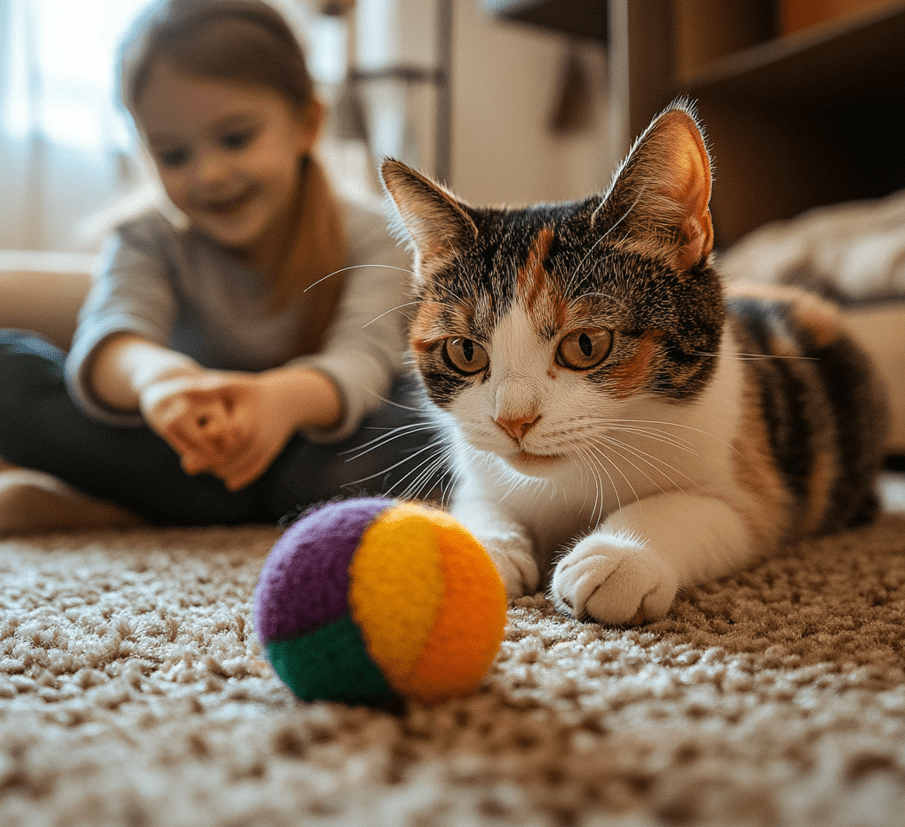
Making vet trips less stressful for your Domestic Shorthair is entirely achievable with preparation, patience, and the right techniques. By choosing a comfortable carrier, desensitizing your cat to travel, using calming aids, and fostering positive associations, you can transform vet visits into a manageable experience. Regular checkups, gentle handling practice, and a supportive veterinary team further ensure your cat’s comfort and health. With these strategies, you’ll not only reduce stress but also strengthen the bond with your feline companion, ensuring they live a happier, healthier life.
For more resources on feline care, visit the American Association of Feline Practitioners or consult your veterinarian. Your Domestic Shorthair deserves stress-free vet visits—start implementing these tips today!

